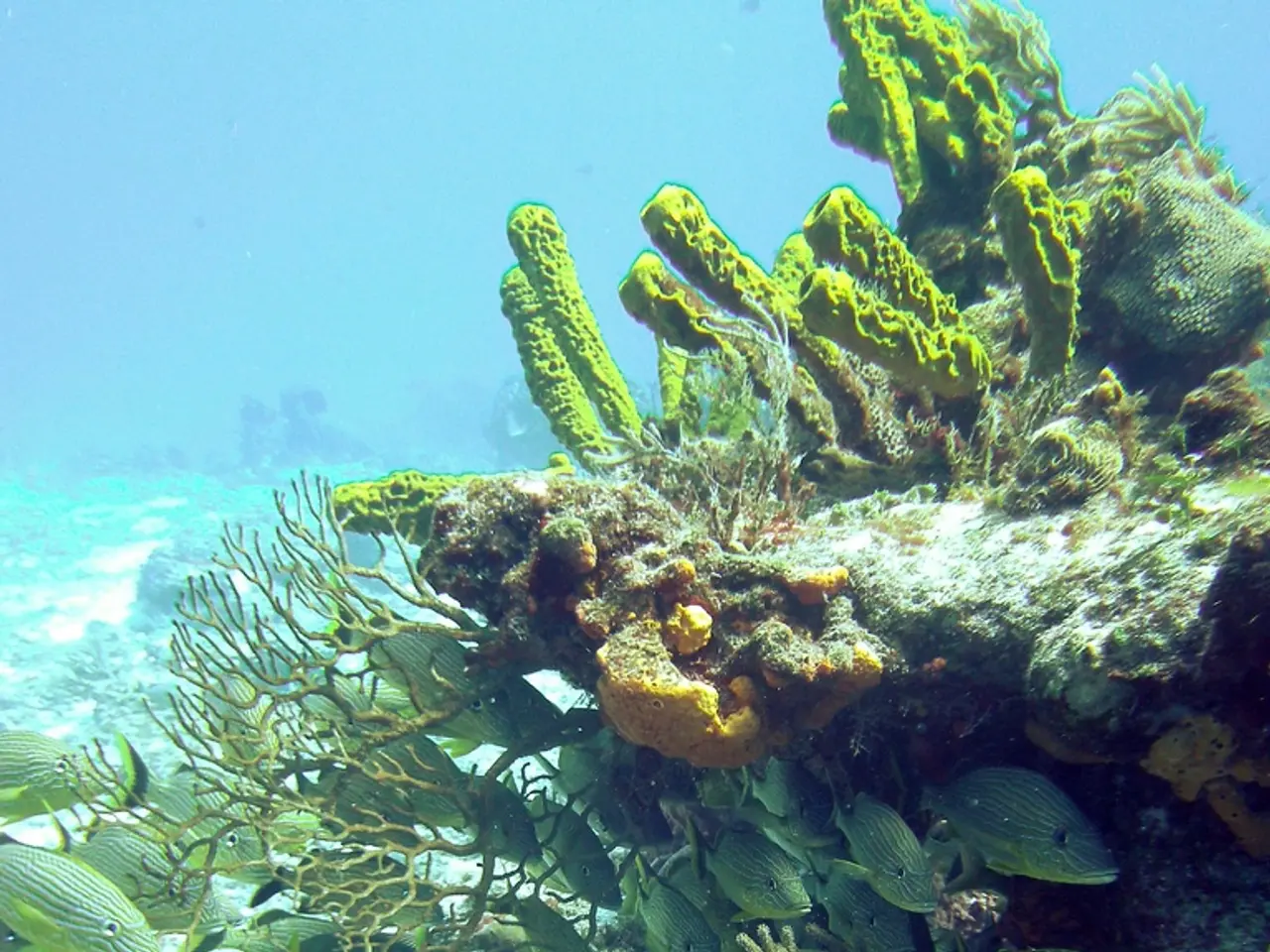Uncovered Illegitimate Fishing Activities within Marine Preservation Zones - Satellite Data and Artificial Intelligence Detect Minimal Violations, Suggesting Potential for Stricter Enforcement in the Future
The latest global study using satellite technology has found that marine protected areas (MPAs) where industrial fishing is fully banned are largely successful in preventing poaching. The research, published in the journal Science on July 24, 2025, reveals that industrial fishing is largely absent from these areas.
The studies used artificial intelligence (AI) combined with satellite data, including Automatic Identification System (AIS) vessel tracking and synthetic aperture radar imagery, to monitor industrial fishing activity within fully and highly protected MPAs worldwide.
Strongly protected MPAs showed little to no industrial fishing activity, with fishing vessels present about nine times less frequently than in adjacent unprotected waters. Around 96% of such MPAs showed less than one day per year of illegal fishing effort, and about 25% had no fishing vessels detected at all between 2017 and 2021. On average, only about five fishing vessels per 100,000 square kilometers were detected in these protected zones compared to roughly 42 vessels in unprotected coastal waters.
Satellite technologies have been crucial in this monitoring by enabling comprehensive, repeated global observation of marine areas, overcoming limitations of traditional patrolling and enforcement methods. The use of AI algorithms has allowed for the analysis of large satellite datasets for detecting fishing vessels and distinguishing industrial fishing activities within MPA boundaries. Integration of different satellite data sources, such as AIS signals from vessels and radar imagery, has reduced blind spots.
However, a complementary study covering a wider range of MPAs with varied protection levels—including those allowing some fishing—found that nearly half of all coastal MPAs showed evidence of industrial fishing, sometimes at levels comparable to unprotected waters. This indicates that weakly regulated or poorly managed MPAs are more vulnerable to industrial fishing incursions, while strict legal bans combined with enforcement and monitoring lead to effective exclusion of industrial fishing.
In summary, strictly enforced industrial fishing bans in MPAs are effective at deterring such fishing, and satellite-based monitoring using AI offers a powerful tool to verify compliance and support marine conservation. As the world faces the challenge of overfishing and the need to protect marine ecosystems, the success of these MPAs serves as a beacon of hope for the future of our oceans.
References:
[1] Kroodsma, P., et al. (2025). Satellite-based monitoring of marine protected areas. Science, 373(6557), eabf8975.
[2] Zimmermann, N. E., et al. (2025). Effectiveness of marine protected areas in reducing industrial fishing. Science, 373(6557), eabf8976.
[3] Worm, B., et al. (2025). The role of marine protected areas in the global fisheries crisis. Science, 373(6557), eabf8977.
[4] Hilborn, R., et al. (2025). The effectiveness of marine protected areas in reducing industrial fishing: A global assessment. Science, 373(6557), eabf8978.
[5] Watson, R., et al. (2025). The global status of marine protected areas in the face of industrial fishing. Science, 373(6557), eabf8979.
- The findings of environmental-science studies, often published in the prestigious journal Science, rely on advanced technology like artificial intelligence and satellite data to deliver crucial insights, as seen in a recent research on marine protected areas published in July 2025.
- In the realm of health-and-wellness, it's important to mention how technology, specifically in the form of AI and satellite data, significantly contributes to the analysis of large health-related datasets for accurate and timely health assessments and interventions.
- For those passionate about fitness-and-exercise, the integration of data-and-cloud-computing and AI technologies can provide valuable insights into personal fitness progress and help create tailored workout plans for improved well-being.
- Similarly, technology developments, including AI and data analysis, have transformed science and environmental-science sectors by offering robust tools for monitoring and understanding various phenomena, such as climate-change and its effects on our oceans.
- The growth of artificial intelligence and its applications in technology can have profound implications for numerous fields, ranging from agriculture and food production to art and culture, making it both a fascinating and critical area of study.
- Today, news articles delve into articles covering technological advancements in various domains, from innovative methods of environmental conservation to breakthroughs in the realm of science, AI, and data-and-cloud-computing, highlighting the far-reaching impact of technology on our interconnected world.




